Experts at protecting themselves, most cacti species bear defensive structures such as spines and glochidia. These sharp structures cover the stems and pads, protecting them from the sun and hungry critters. While this defensive strategy successfully deters an array of predators, some animals have evolved to eat cacti and do so without getting hurt.
Below, we’ll cover seven amazing animals that eat cacti and explain their clever strategies for munching on their prickly prize. Specifically, this guide will protect animals that eat the stems and pads of cacti rather than just feeding on the flowers or fruits. Read on to learn more!
1. Arabian Camel (Camelus dromedarius)
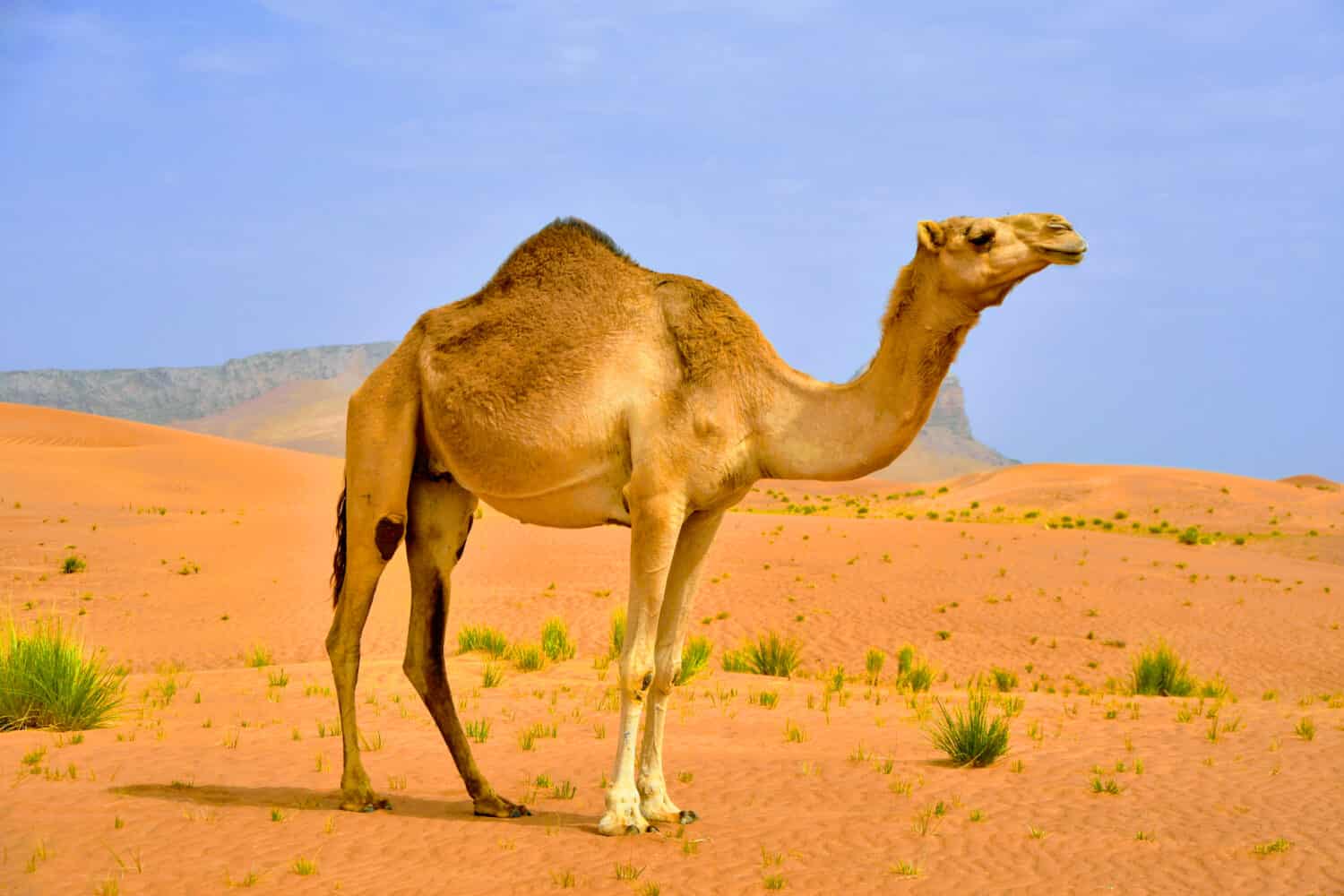
Arabian camels have evolved the ability to eat tough, thorny vegetation.
©Shengyong Li/Shutterstock.com
Thick, flexible, and leathery lips allow the Arabian camel (Camelus dromedarius) to adeptly grab stems and pads of cacti without feeling pain. While there are no native cacti plants overlapping the range of Arabian camels, non-native species have taken root. The adaptations for eating thorny, non-cactus plants have allowed the Arabian camel to transition quite well to chowing down on cacti.
Their rotational chewing abilities allow them to orient the plant to the best position, and the roof of their mouth hardens against feeling spiky or damaged. Finally, raised, cone-shaped, rough nodules called papillae line their mouth, cheeks, and tongue. These structures further desensitize the spines and manipulate them to run vertically down the throat. This prevents the spines from doing any damage as the plant is swallowed.
2. Animals That Eat Cactus: Javelinas (Tayassuidae)
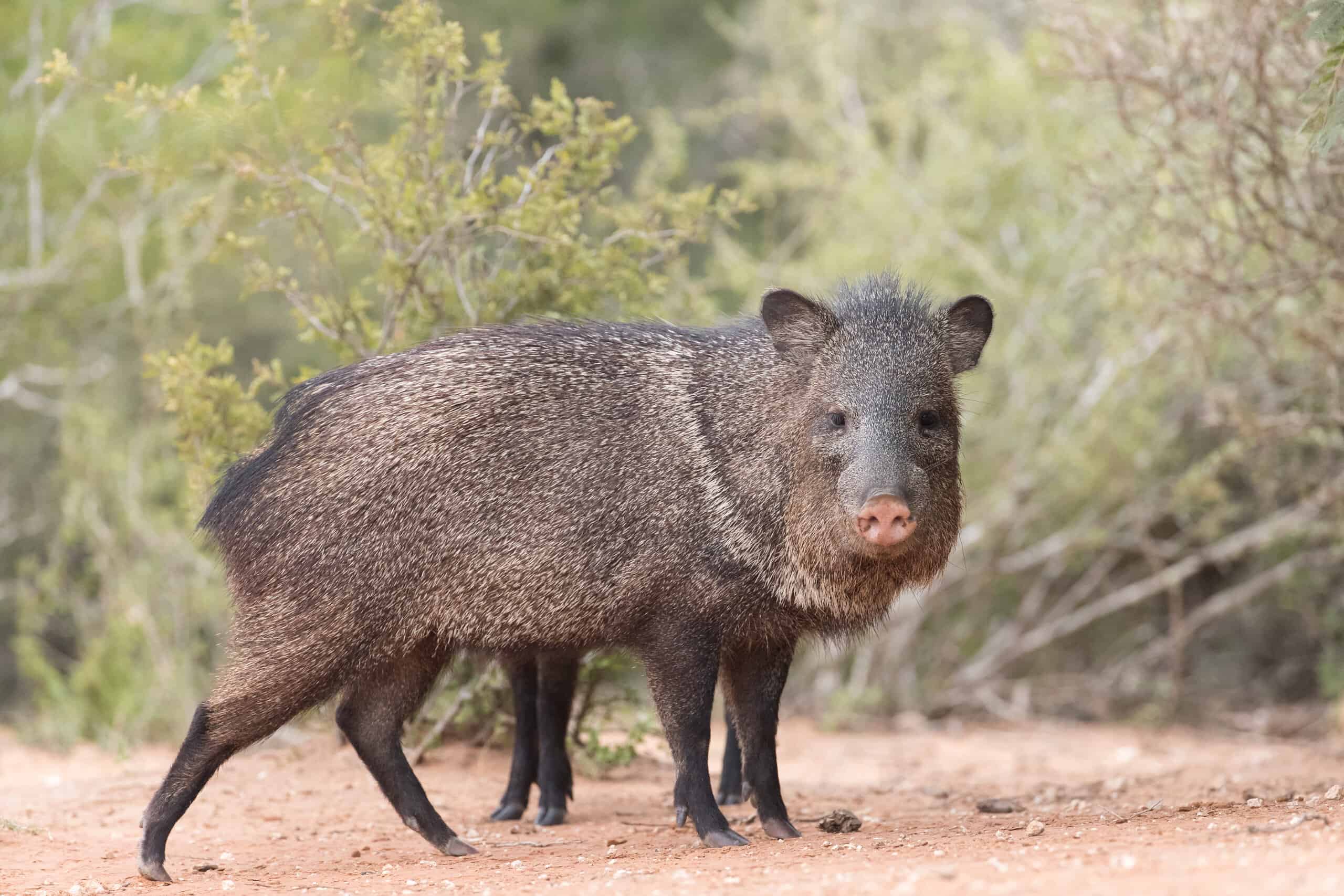
Javelinas use their 2-inch-long canines to shred cacti stems and dig into their meals unharmed.
©Dennis W Donohue/Shutterstock.com
A favorite meal of javelinas (aka peccaries) is the prickly pear cactus’s roots, fruit, stems, and pads. With 2-inch-long canines, solid and flat molars, and a hardened palate, javelinas first expertly shred and grind and then consume prickly pear pads with 6-inch-long needles! Three species of javelinas live throughout primarily arid regions of South, Central, and North America.
Javelinas (Tayassuidae) will often root up the entire cactus plant. Tough and thickened skin around their snout and coarse hair covering their skin allow them to root up these spiny plants without becoming injured.
3. Desert Tortoise (Gopherus agassizii)
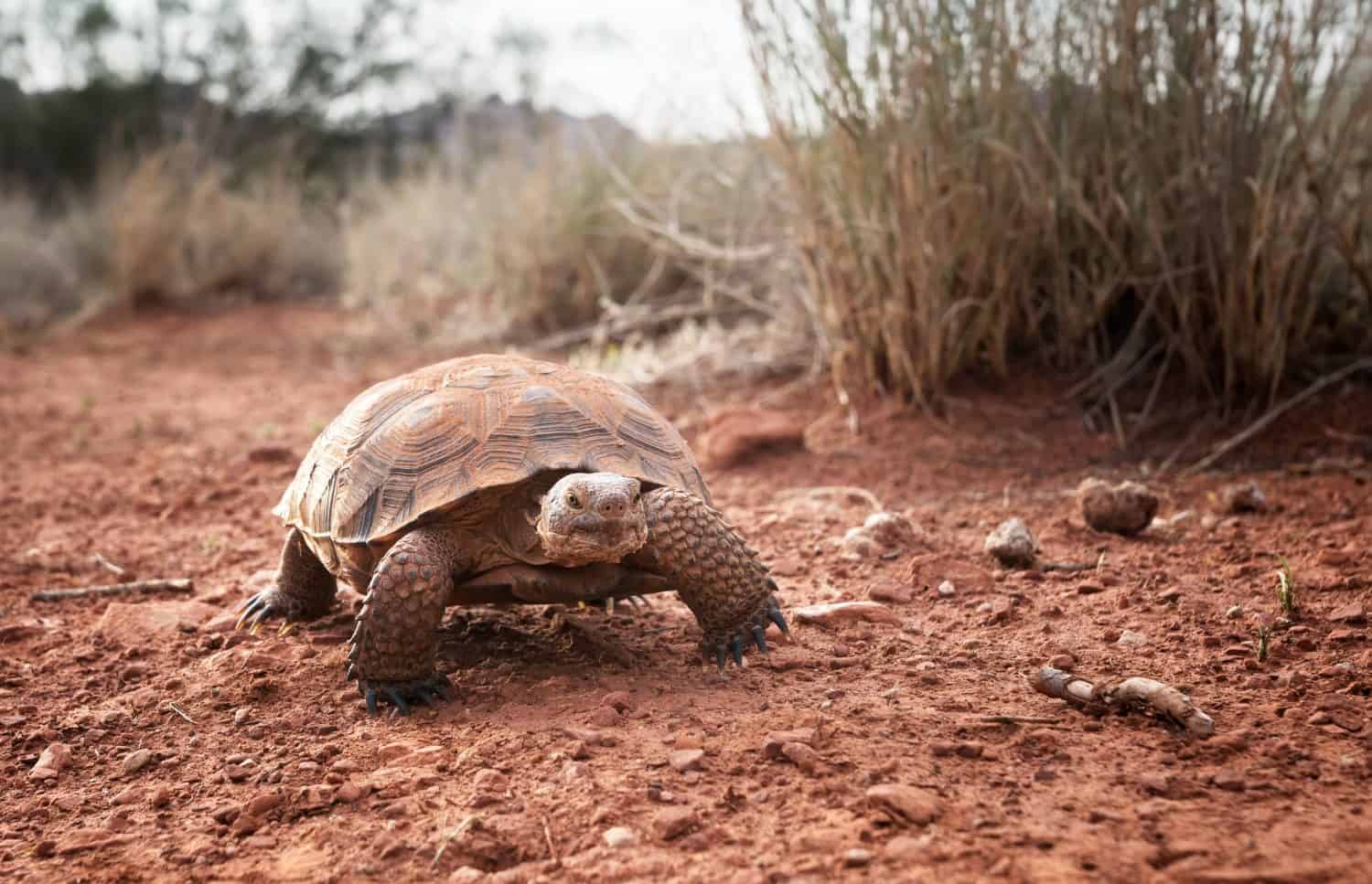
While desert tortoises love eating prickly pears and cactus pads, their strategy is to simply munch on species without large spines.
©IrinaK/Shutterstock.com
Without adaptions to chow down on long-spined cacti with ease, desert tortoises (Gopherus agassizii) target plants that are only covered in the tiny bristles called glochidia rather than long spines. With their incredibly tough and hardened beak, the desert tortoise can grind down the pads of typically spineless prickly pear species such as Opuntia basilaris. They also heartedly devour the fruit of prickly pears.
4. Galapagos Land Iguana (Conolophus subcristatus)
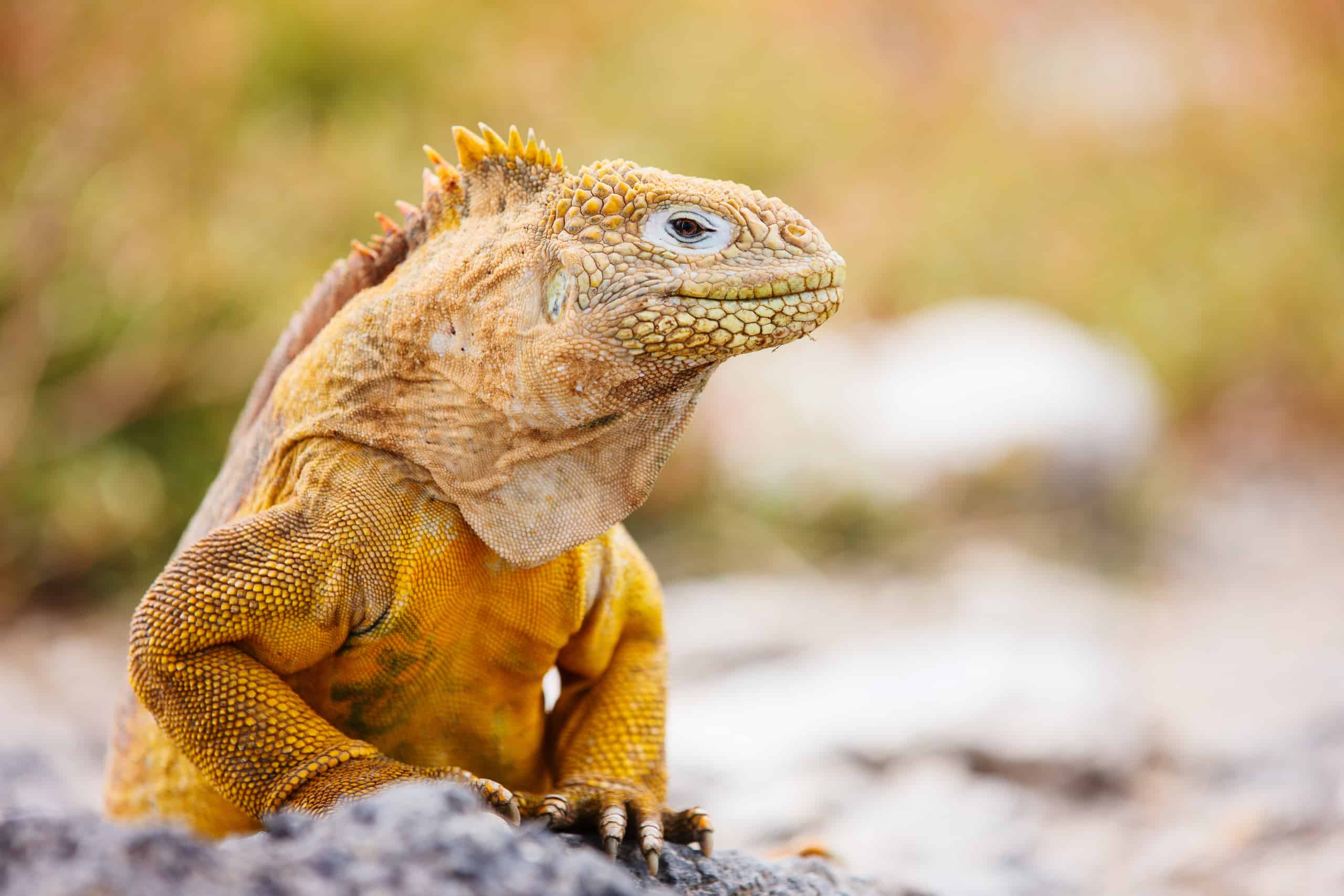
The Galapagos land iguana has evolved several adaptions that aide it in devouring spiny cacti.
©BlueOrange Studio/Shutterstock.com
On the island of Galapagos, the Galapagos land iguana (Conolophus subcristatus) relies on the high moisture content in cacti as a primary freshwater source. Their thick, leathery skin, hardened palate, and tough tongue protect them from the spines of the cactus pads. They use their claws to remove the largest of spines before chowing down on spiky prickly pear cacti (Opuntia spp). The fruit and pads of prickly pears can make up about 80% of the Galapagos land iguana’s diet.
5. Desert Bighorn Sheep (Ovis canadensis nelsoni)

Desert
bighorn sheep
use their incredible horns to bust open cacti.
©iStock.com/Rainbohm
The desert bighorn sheep is an expert at using its horns for defense, offense, and even busting open cacti. To supplement their water intake, these clever desert sheep seek out the fleshy insides of the barrel cactus (Ferocactus cylindraceus), which is high in moisture content. They use their powerful horns to smash the round cactus apart and then devour the spineless flesh.
6. Antelope Jackrabbit (Lepus alleni)
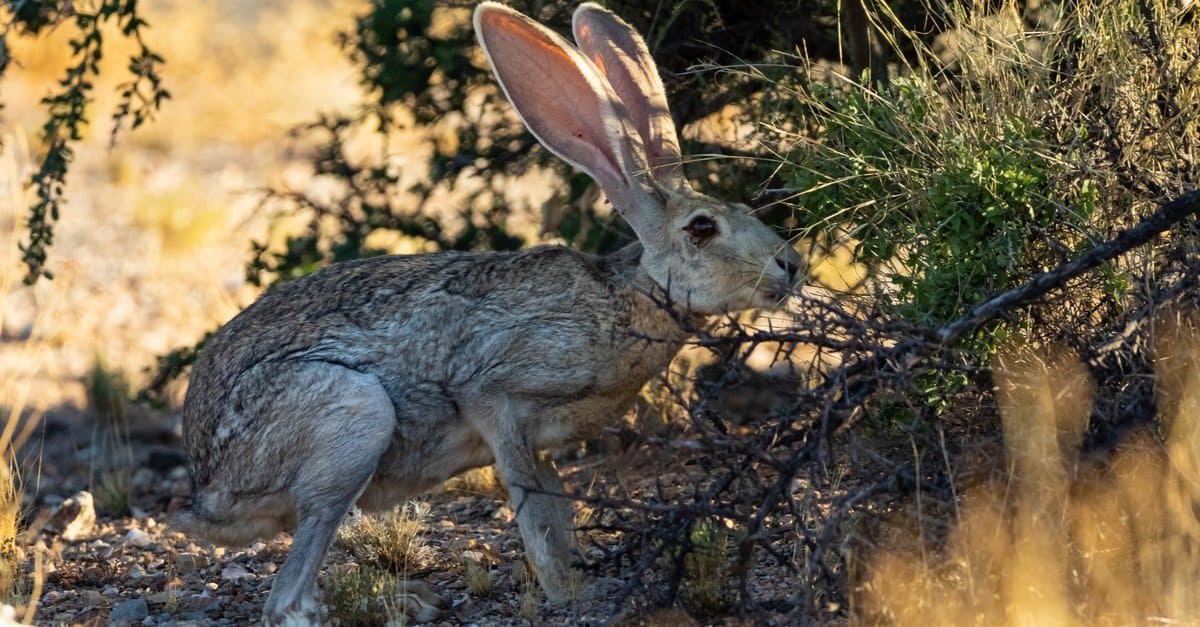
Nimble with small mouths,
antelope
jackrabbits are able to eat the flesh of cacti while avoiding large spines.
©Vincent Pro Photo/Shutterstock.com
For the antelope jackrabbit (Lepus alleni), the strategy to safely eat cacti relies partially on expertly avoiding the thorny parts of the plant. They also use their long claws to scrape off the nodule-like areoles that produce glochidia. With a small, nimble mouth, antelope jackrabbits can feast on small portions of the cactus at a time, carefully removing glochidia and avoiding large spines as they eat.
7. Longhorn Cactus Beetle (Moneilema spp.)
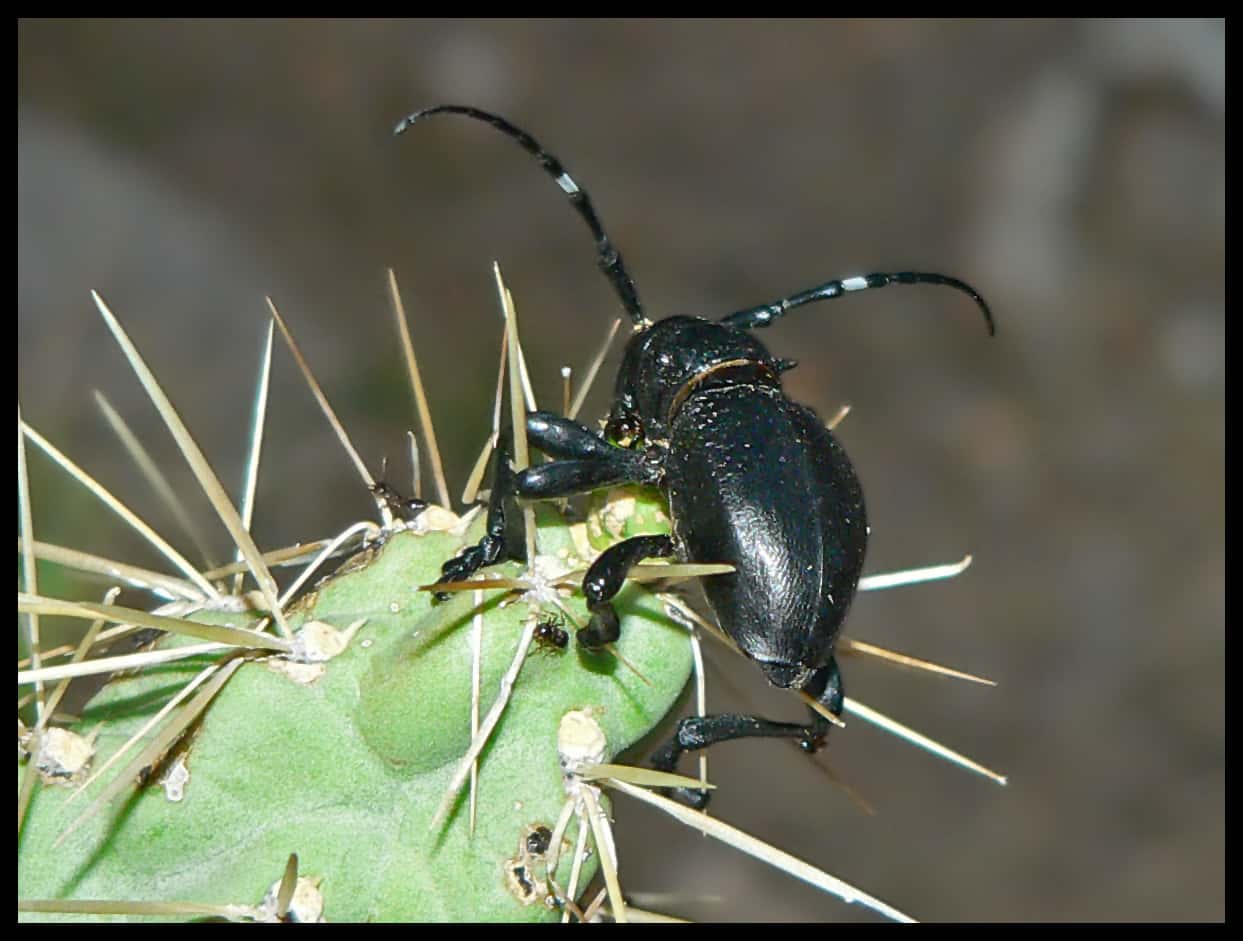
The genus of longhorn cactus beetles has evolved to specialize in feeding and living on various cacti of North American deserts.
The longhorn cactus beetle (Moneilema spp.) is a genus of insects that feed on and house themselves within various cacti species of North American deserts. In their larvae stage, these insects bore into the roots and stems of cacti. As adults, they feed primarily on chollas, prickly pear cacti, and young saguaro. Their armor-like exoskeleton allows them to walk on the surface of the cactus stems without suffering injury. There, longhorn cactus beetles can nibble as they please on spineless areas.
The photo featured at the top of this post is © Charles T. Peden/Shutterstock.com
Thank you for reading! Have some feedback for us? Contact the AZ Animals editorial team.







